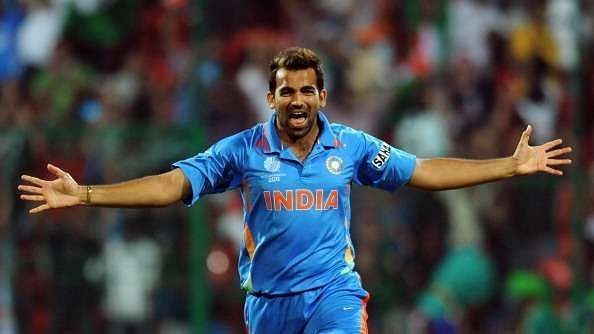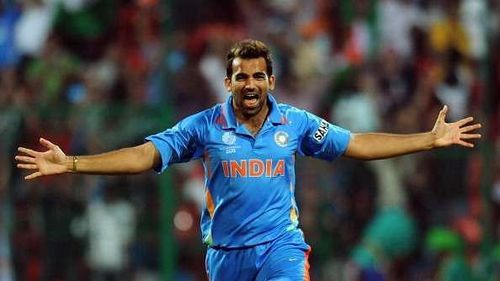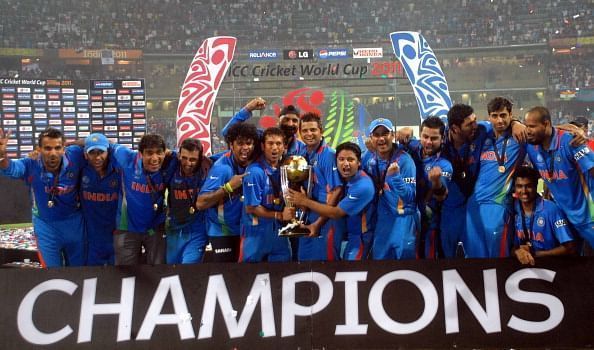
Indian analyst reveals to R Ashwin how he helped South Africa beat India in the 2011 World Cup

Indian analyst Prasanna Agoram, who was with the South African team in the 2011 World Cup, has explained how he plotted the Proteas' victory over the Indian cricket team at the 2011 World Cup.
Agoram, who has also worked with RCB and Virat Kohli, shared the details of the gameplan he had employed while speaking to Ravichandran Ashwin on the latter's YouTube channel.
The analyst recalled that the Indian team was on a high before they took on South Africa at Nagpur in the 2011 World Cup.
"The Indian team destroyed everyone at the 2011 World Cup. When India came to play in Nagpur, they were peaking at the right time."
Agoram opined that the Indian team was winning on the back of their batting might, with the likes of Virender Sehwag, Gautam Gambhir, Virat Kohli, Sachin Tendulkar, Yuvraj Singh, Suresh Raina and Yusuf Pathan producing telling performances.
"India, I don't know whether you will accept it or not, won mostly because of their batting influence. You see the batting with the likes of Sehwag, Gambhir, Kohli, Sachin Tendulkar, Yuvraj Singh, Suresh Raina, Yusuf Pathan. It is very easy to say that but it is frightening to see."
Agoram mentioned that his strategy was to target the Indian bowling attack and to neutralise the effectiveness of main bowler Zaheer Khan.
"What strategy I gave was, how we are going to win was, how we are going to upset the bowling applecart, that is rolling arm."
"What we did in most of the games. In one in Banglore, Zaheer Khan went out of the way to win it for us."
Cricket South Africa's leading analyst shared Zaheer Khan's statistics at the death in each of the previous matches the Indian team had played.
"Before South Africa played us, in the four games against Bangladesh, England, Ireland and Netherlands, the batting powerplay's influence was clearly visible."
"In the death overs in the first game he had figures of 1/4 in 2 overs. In the match against England, he had figures of 3/11 in 3 overs of batting power play and death overs (overs 43, 45 and 47). India was losing when he dismissed Andrew Strauss."
"After that, he bowled overs 41, 43, 45 and 47 including batting power play and death against Ireland for figures of 1/15 in 4 overs. Then death overs against Netherlands, he had figures of 2/3."
Agoram observed that the Indian captain MS Dhoni would use Zaheer Khan in critical phases of the game, and that the latter was most effective in the death overs.
"The most telling effect, he had. How Dhoni used him was that he brought him on in critical periods. He would bowl his first 5 overs, mostly. His bowling in that powerplay and during the death overs, there was a massive difference."
"In the first power play of overs 1-10, Zaheer had figures of 18-1-86-2. In the middle overs (11-40), he had figures of 7-0-35-2 and in the death overs (41-50) it was 10.4-0-33-7. His death overs performance is absolutely alarming."
South Africa's strategy against the Indian team for the death overs

Agoram pointed out that Zaheer Khan would invariably bowl his first 5 overs in the mandatory powerplay. Zak would then be brought back for a couple of overs in the middle for a breakthrough, with the remaining 3 overs reserved for the batting powerplay and the death.
"So, he would bowl his first 5 overs in the initial 10 overs. In the period of 27-32, he comes in for a small spell, to get a breakthrough. By then, he would be done with 7 overs. So if you force a batting powerplay then immediately, Dhoni has to bring him back. And that was his pattern."
The analyst revealed that his strategy was to take the batting powerplay immediately after Zaheer Khan's two-over spell in the middle, so that the Indian captain would have bowl him again and almost exhaust his quota of overs.
"So if the batting powerplay is taken then, by 37 overs Zaheer would have bowled 9 overs. My concept was that a batsman would anyway swing in the last 5 overs, so the powerplay is always wasted at that time. Another thing was, as the ball got older, his reverse was more effective."
Agoram opined that it was not easy to defeat the Indian team at their home, but that the South Africans had made their task easier with this strategy.
"It is not easy to defeat India in India. For the last 10 overs, we needed 69 runs with 7 wickets standing and Zaheer Khan has only one over to bowl. In that situation, it is very simple."
Agoram recalled MS Dhoni bringing back the premier Indian bowler to bowl the 49th over, with the South Africans playing him out and targeting Ashish Nehra in the final over to achieve their target.
"So Dhoni got Zaheer back again in the 49th over. There were 17 runs required in the 2 overs. Even then, we played him out for 4 overs. Ashish Nehra had 13 runs to defend. Game over in 4 balls. So this was the theory behind it."
While the Indian cricket team went on to bag their second World Cup title in 2011, their only reverse at the tournament was at the hands of the South Africans. The Proteas had chased down the 297-run target at Nagpur with 3 wickets in hand and a couple of deliveries to spare.